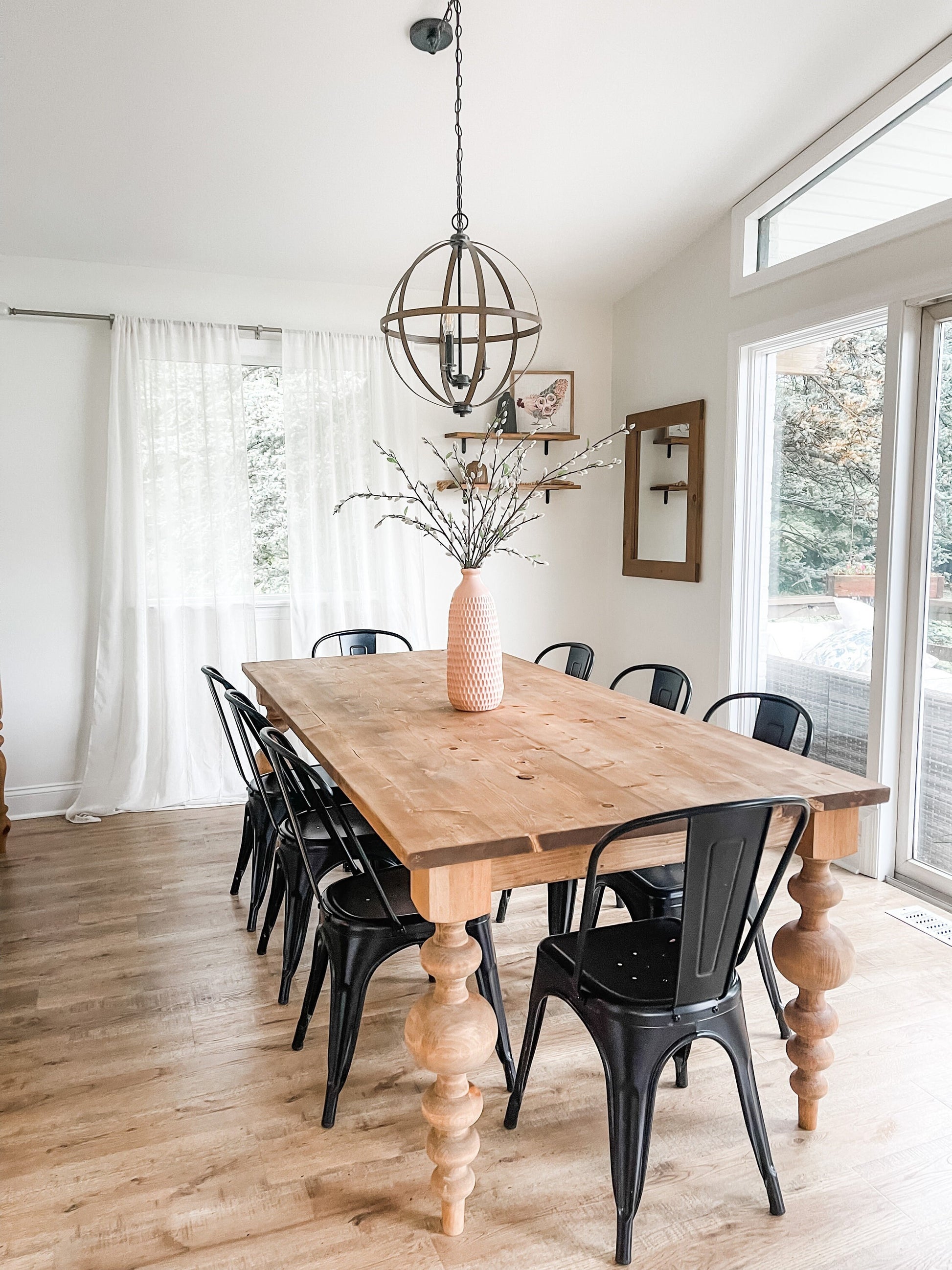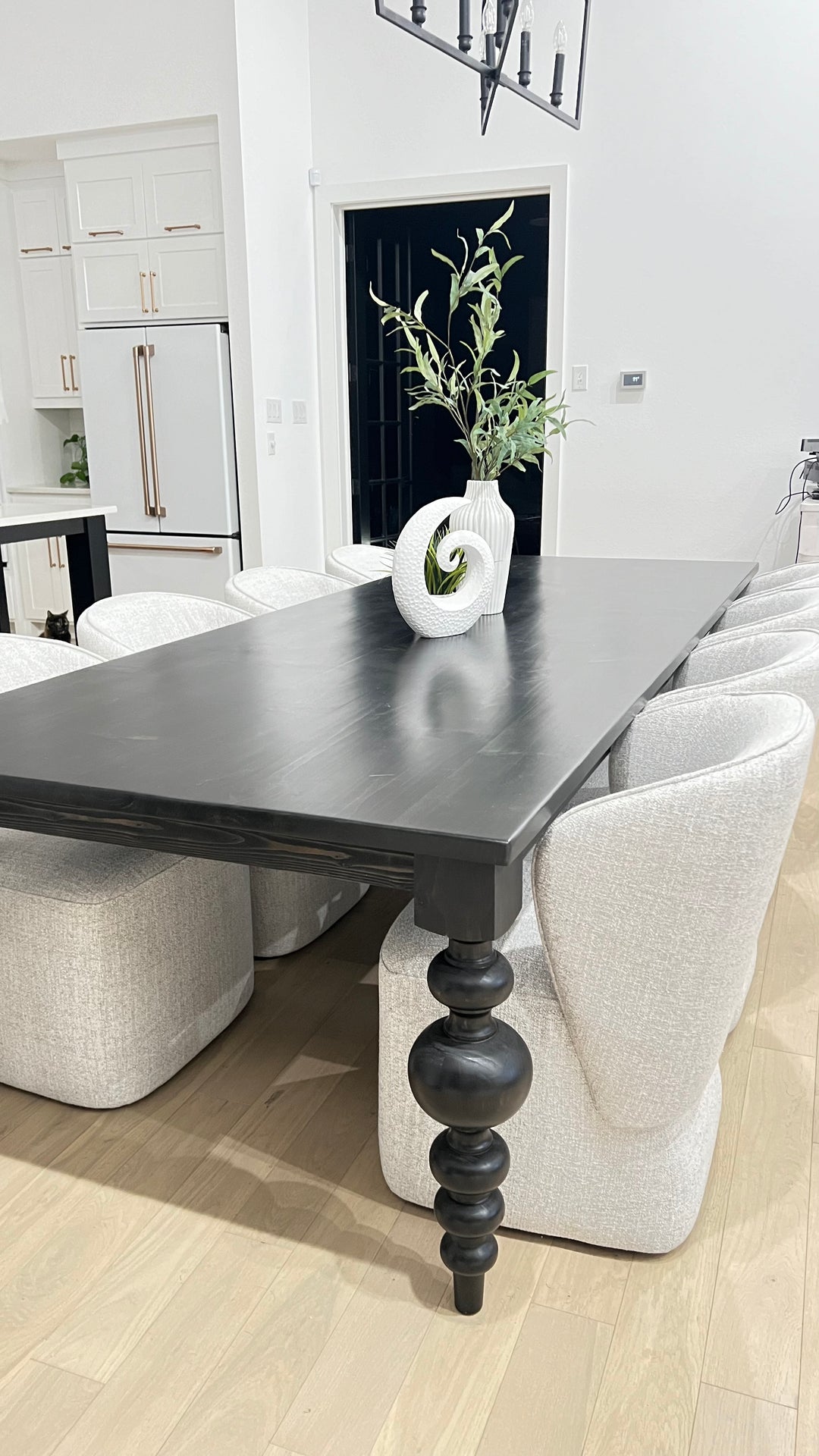Upgrade Your Furniture with Custom Dining Room Table Legs
Just How to Choose the Perfect Dining-room Table Legs for Your Home Design
Picking the ideal eating space table legs is a nuanced procedure that needs careful consideration of various aspects, including your room restrictions, visual preferences, and functional requirements. The interaction in between measurements, styles, and products can significantly influence the setting of your eating area, making it essential to approach this decision methodically. As you ponder the myriad choices readily available, it ends up being clear that the appropriate choice extends beyond mere appearance; it can boost your general eating experience. What elements should you prioritize to guarantee your selection enhances your home's one-of-a-kind personality?
Assess Your Eating Room
Examining your dining area is critical for selecting the right table legs that complement both looks and capability. Begin by determining the measurements of your dining area, consisting of ceiling height, floor room, and proximity to various other furniture. This details will help figure out the suitable dimension and elevation of your table, which directly influences the option of table legs.
Following, consider the design and format of your dining area. For circumstances, an open-concept style might gain from table legs that use aesthetic lightness, such as slender metal or acrylic alternatives. Alternatively, an extra typical setup could call for tough wood legs that provide a sense of durability.
Review the existing shade scheme and materials in your eating area. Balancing the table legs with these aspects produces a cohesive look that improves the overall design.
Ultimately, a detailed analysis of your eating space will lead you in making an informed choice, making certain that your table legs not only boost the aesthetic allure but likewise offer sensible purposes.
Consider Your Style Preferences
When selecting dining area table legs, it is vital to review your personal style choices, as they considerably affect the total aesthetic of your dining space. Your selection of table legs can either enhance or comparison with existing design, making it important to align them with your recommended interior decoration theme.
If your home leans in the direction of a contemporary aesthetic, take into consideration smooth metal or minimalist wooden legs that provide a tidy, uncluttered appearance. For a much more traditional method, ornate wood legs with intricate makings can add a touch of style and class. Industrial styles take advantage of robust, raw products such as reclaimed timber and metal mixes, showing a sturdy appeal.
In addition, farmhouse and rustic styles commonly favor tough, chunky legs that stimulate a sense of heat and comfort. On the other hand, if your decoration is diverse, you may choose unique forms or a mix of products to develop aesthetic rate of interest.

Evaluate Material Options
The selection of material for eating room table legs plays a pivotal function in both longevity and aesthetic charm. Typical products include timber, steel, and composite alternatives, each offering distinct qualities that can influence the overall appearance and long life of your table.
Wood is a classic choice, understood for its warmth and flexibility. Hardwoods like oak and walnut supply phenomenal strength and can be completed in various spots to match any design. Nevertheless, softwoods like yearn are a lot more vulnerable to scratches and dents, making them less perfect for high-traffic locations.
Metal legs, commonly crafted from steel or light weight aluminum, emanate modernity and commercial beauty. They are resistant and very sturdy to use, making them appropriate for families with children or constant events (dining room table legs). Furthermore, steel can be finished in numerous colors, improving the personalization possibilities
Composite products, such as MDF or laminate, offer affordability and varied styles. While generally much less resilient than solid timber or metal, they can still provide a fashionable appearance and are usually simple to maintain.
Inevitably, the material you pick must align with your way of living, aesthetic choices, and the degree of use your eating table will certainly experience.
Determine Elevation and Size
Choosing the suitable elevation and size for your eating space table is essential for both performance and comfort. The common height for eating tables generally varies from 28 to 30 inches, allowing adequate legroom for most individuals when seated. It is important to take into consideration the dimensions of your eating room and the kinds of chairs you intend to use.

Moreover, take into consideration the percentages of your dining-room. A larger table in a spacious area can produce a grand atmosphere, while a smaller sized table functions well in even more intimate setups. Inevitably, the appropriate elevation and dimension will certainly harmonize with your overall decor and enhance the dining experience for you and your guests.
Explore Customization Opportunities

Additionally, the design of the legs can be tailored to fit different styles, such as rustic, modern-day, or commercial. Tapered legs can stimulate a mid-century contemporary feel, while chunky, block-style legs may reverberate with standard or farmhouse style.
House owners can also discover color surfaces, from natural timber stains to repaint, enabling them to match or comparison with the table top and surrounding design.
Moreover, leg height can be gotten used to suit specific seating setups or individual choices, boosting both convenience and functionality.
Last but not least, distinct decorations, such as carvings or ornamental braces, can even more individualize the table legs, making the dining experience not just a meal yet a statement piece in the home. By taking into consideration these personalization alternatives, homeowners can produce a dining-room table that genuinely mirrors their individuality.
Final Thought
Picking the perfect dining area table legs requires careful consideration of numerous factors, including the dimensions of the dining area, design choices, material toughness, i was reading this and wanted height. Customization choices additionally boost the capacity to achieve a cohesive aesthetic that enhances the total style. By systematically assessing these components, homeowners can make certain that the picked table legs not just meet practical needs however also contribute favorably to the dining experience and atmosphere of the home.
Picking the excellent eating area table legs is a nuanced process that requires careful consideration of different aspects, including your area restrictions, aesthetic preferences, and practical needs.Assessing your eating room is critical for picking the right table legs that enhance both visual appeals and functionality.When identifying size, gauge the location where the table will be placed to guarantee it fits comfortably, learn the facts here now enabling for at least 36 inches of clearance around the table for easy movement. A bigger table in a large area can develop a grand setting, see page while a smaller table works well in even more intimate setups.Choosing the perfect eating space table legs needs mindful factor to consider of different elements, including the measurements of the eating space, design preferences, material durability, and wanted elevation.